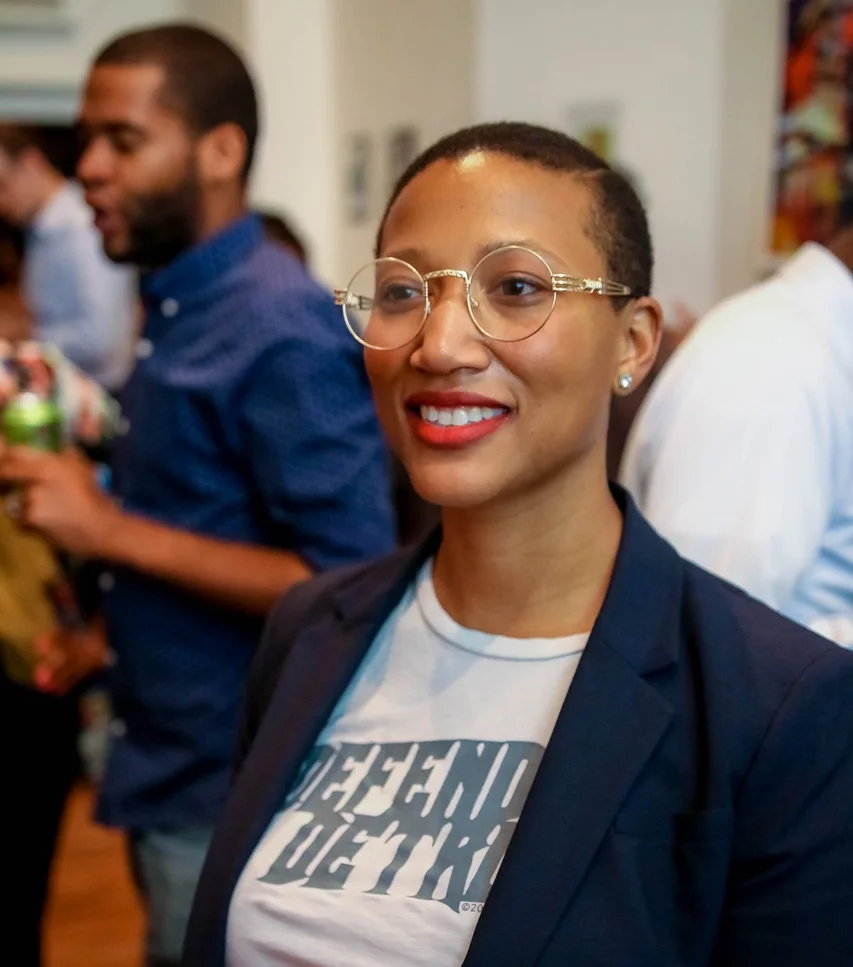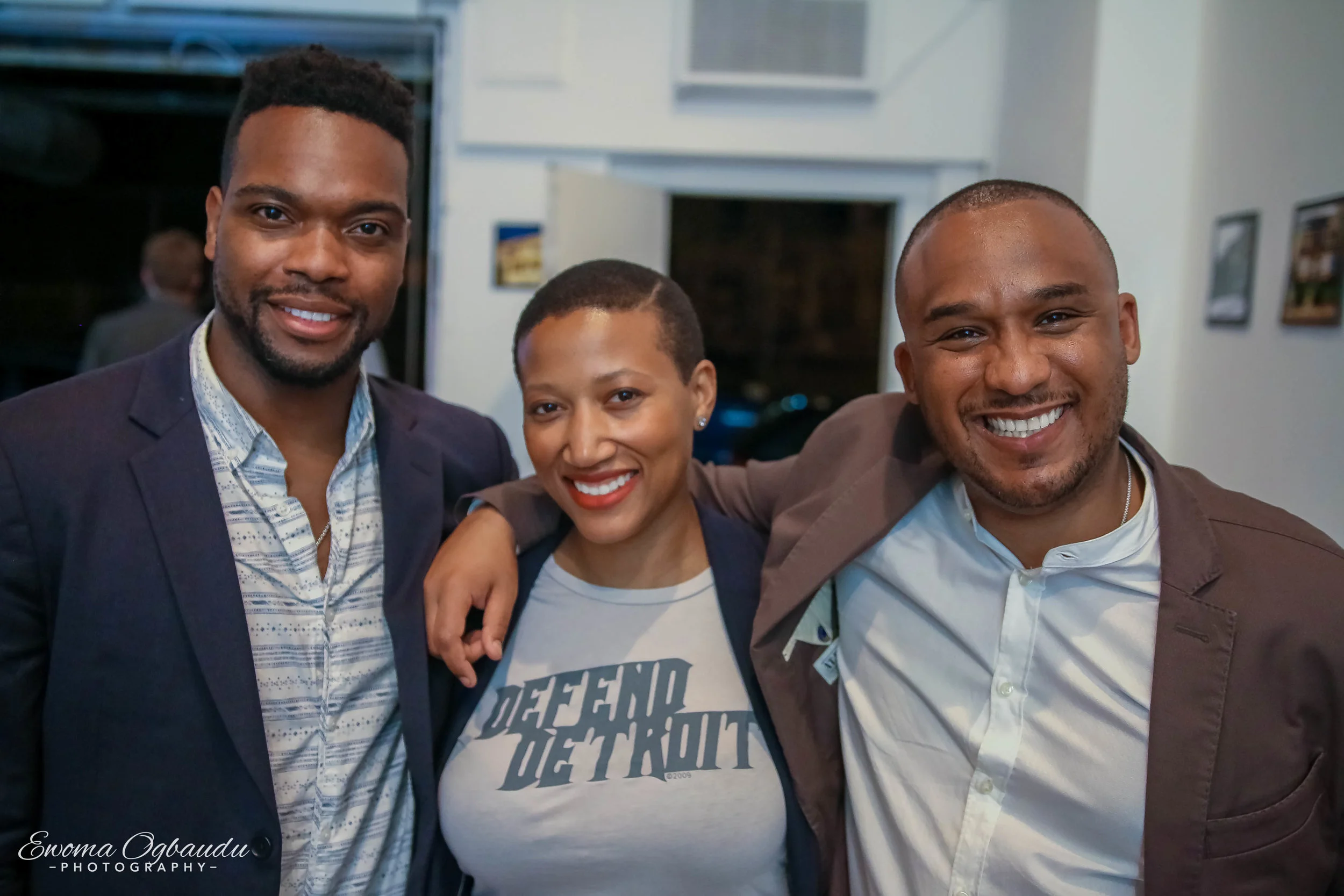Detroit Native Returns Home to Accelerate the City’s Revival
A/E/C Stories is an ongoing series of posts featuring individuals who excel in the architecture, engineering and construction industry. Nominate someone.
When Kimberly Dowdell, AIA, left Detroit in 2001 to pursue her bachelor of architecture degree at Cornell University, she knew she would return home someday.
From the age of 11, Dowdell has had a passion for improving the quality of life in her hometown as an architect. She later discovered the importance of bolstering her influence as a real-estate developer and entrepreneur. She also picked up a master of public administration degree from Harvard University’s John F. Kennedy School of Government as a Sheila C. Johnson Leadership Fellow in the Center for Public Leadership.
Before returning to Detroit in 2015 to serve on the city's Housing and Revitalization team, Dowdell held a series of public- and private-sector positions in Washington, D.C., and New York City. She recently joined Century Partners, an entrepreneurial firm focused on revitalizing residential housing developments through grassroots community outreach and creative place-making.
I caught up with Kim—a friend and former colleague—and asked her to respond to a few questions about her career journey and aspirations.
MP: Your career has been quite diverse—ranging from the federal government, to architectural firms, to real estate developers. Has it been a planned progression or more of an organic evolution?
KD: My career feels like it has organically evolved from the initial vision that I had as an 11-year-old girl in Detroit who wondered how to make the city a better place. At that point in time, I had recently learned what architects did and made the assumption that if architects make buildings better, then they can also make cities better.
Once I began my career in architecture, it became clear to me that architects are generally not the decision-makers when it comes to urban policy or real estate development. As a result of this disappointing revelation, I made it a point to target career shifts that got me closer to the decision-making table. Every position that I took on provided greater access to influencers and change agents. I am grateful for all of the professional experiences that I've had because each one has led to the next, and together they create a solid foundation for me to build myself up as an entrepreneur and an urban influencer.
David Alade, Kimberly Dowdell and Andrew Colom of Century Partners.
MP: What excites you about your new role as a Partner at Century Partners?
KD: I'm incredibly excited about helping the company scale up to have a greater positive impact on Detroit neighborhoods. Company Founders Andrew Colom and David Alade began their work in Detroit several years ago with the intent to foster holistic and sustainable development. There has been a lot of development focus on Downtown and Midtown Detroit, but that's not where the vast majority of Detroiters live, work and play.
Although Detroit boasts a land mass of about 139 square miles, most of the major financial and policy attention is focused on approximately 7 square miles. Century Partners is proud to lead revitalization efforts in several key neighborhoods representing the other 132 square miles that are often neglected by major developers. To date, Century Partners has raised well over $3.5 million in equity funding to acquire and restore nearly 70 units of housing in Detroit. We take pride in facilitating regeneration instead of gentrification. Most of the homes that we have acquired were abandoned shells where we've performed high-quality rehabs to make them desirable for Detroit's newest residents. We are helping to bring new life to the neighborhoods where we've invested and we are gearing up to do even more of this critical work as we continue to expand our footprint in the city.
We're currently working with an innovative crowd investment platform called Rabble to raise an additional $550,000 to continue our work. What's exciting about this partnership with Rabble is the opportunity to open our fund to non-accredited investors. That means anyone can get involved in what we're doing and earn double-digit annualized returns on their investment for as little as $100. Prior to Rabble, our minimum investment was $10,000. In effect, Rabble is making impact investing accessible to all. We're very proud to be Rabble's first project and we look forward to bringing more innovative neighborhood revitalization strategies to the marketplace as we continue to grow.
MP: What makes you hopeful about Detroit’s future?
KD: I am hopeful about Detroit's future because I've always been an optimist. In fact, I think that is what sets architects apart from many other professionals. We have a keen sense of what could be and we tend to think creatively about how to make our vision a reality—even when things look particularly negative. As a young girl traveling around Detroit's various neighborhoods, I was able to see two major positive aspects of Detroit: beautiful old buildings with good bones and wonderful people existing in tough environments.
I firmly believe that Detroit has to get better. The city has no choice but "to rise from the ashes," which is part of the city’s motto. I've also been focused on identifying viable solutions to the problems that have been plaguing Detroit for the better part of two decades now, so I feel personally invested in making sure that there will be a very bright future for the city. It certainly helps that more and more people are visiting and showing interest in what I believe will be the greatest comeback story in American history. For the first time in a very long time, it makes a lot of sense to financially invest in Detroit and it is very refreshing to see that people are supporting the work that my team is doing by investing with us directly.
MP: How are architects uniquely positioned to address today’s greatest urban challenges, such as poverty, education, healthcare and social equity?
KD: As I reflect on my education in both architecture and public administration, I can think of one major strategy that architects can deploy to address our most pressing problems, and that's productive collaboration. What I mean by that is cross-sector collaboration between the public sector, the private sector and the not-for-profit sector. I believe all three need to be at the table to actually make serious progress on our greatest urban challenges.
Architects are incredible problem-solvers and very skilled at coordinating teams to complete complicated projects. I think we are uniquely positioned to use those problem-solving and coordination skills to bring different people together to begin resolving built-environment issues at the very least. I also believe that policy design and architectural design are similar in the sense that you begin with an idea of how to solve a particular problem. You test the idea and then you iterate until you get it right.



